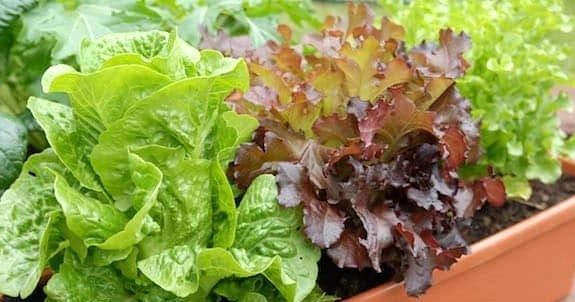Last week our column focused on the importance of growing food indoors in the winter – especially with our produce costs projected to rise six to eight per cent in 2023. We talked about plants needing light, water, warmth, oxygen and food to grow but we need to focus a bit more on how to ensure we supply enough light to be successful in this venture. As we are in the Northern Hemisphere, the sun is a long way away from us in winter so supplemental light is necessary in order to get good growth indoors. Thus, if we choose to grow anything other than sprouts, we will need to invest in a grow light.
There are many choices in grow lights but I personally like the SunBlaster T5 fluorescent full spectrum lights that are 48 inches in length. They are reasonably priced and energy efficient. If you wish to spend a bit more, they also sell, LEDs if they are in your price bracket.
Light is one of the most important factors to consider when growing plants indoors. When choosing plants to grow this time of year to supplement your diet, think about the light that they need to thrive and ensure the plants are appropriately situated under your grow light. Lettuce, just as an example, needs light to germinate so when planting tiny seeds that need light, I simply sprinkle the seeds on the top of the media, and gently press them into the media. Misting the planted areas will also ensure that the seeds have good contact with the media but still get that needed light for germination. Follow the directions that are found on the seed packet and remember that generally a seed is planted to the depth of the diameter of the seed. It is important to keep the media moist to ensure even germination so covering the pot with a plastic wrap or tray cover until most of the seeds germinate is a good idea.
Once the seeds have mostly germinated, they will need to be put directly under the grow light to ensure the seedlings develop into strong, healthy plants. If you notice that your seedlings are tall and spindly, it is likely because they are not getting enough light. As the seedlings grow, gradually raise the light to coincide with their rate of growth. Gradually reduce the humidity over a day or so to ensure that the tiny plants are not subjected to undue stress while ensuring the media is still kept moist but not wet.
Growing your own plants from seed is not just fun, but allows us freedom to grow almost anything we desire. There is an amazing selection of different varieties and cultivars of plants that sometimes makes it rather difficult for us to decide what we should grow. It is easy to get carried away and grow too much as this time of year we are craving green growth and those tiny little packets don’t seem to hold that much! It is only once those plants get growing, we see how a few seeds can easily grow into way too many plants. Instead of planting all the seeds in the package, only plant as many as you will need. Share the leftovers or store them in a cool, dry place.
Be innovative in what you wish to grow. Some good ideas include a variety of types of lettuce. They germinate quickly and can be harvested before too long, ensuring that you and those who are close to you can enjoy fresh lettuce quickly. Other ideas will depend on your palette but arugula, corn salad, greens like amaranth, beet, chard, cress, mustard and kale, which are all fun to grow and great to eat.
Watch for future columns after the holiday season that help you to successfully grow some food indoors in winter. Orchid Horticulture and Horticulturist, Patricia Hanbidge are offering an online course on growing food indoors on January 14th 2023. Check out this offering under Community Learning on our website at
Hanbidge is the Lead Horticulturist with Orchid Horticulture. Find us at ; by email at [email protected]; on facebook @orchidhort and on instagram at #orchidhort.
Tune into GROW Live on our Facebook page or check out the Youtube channel GROW




